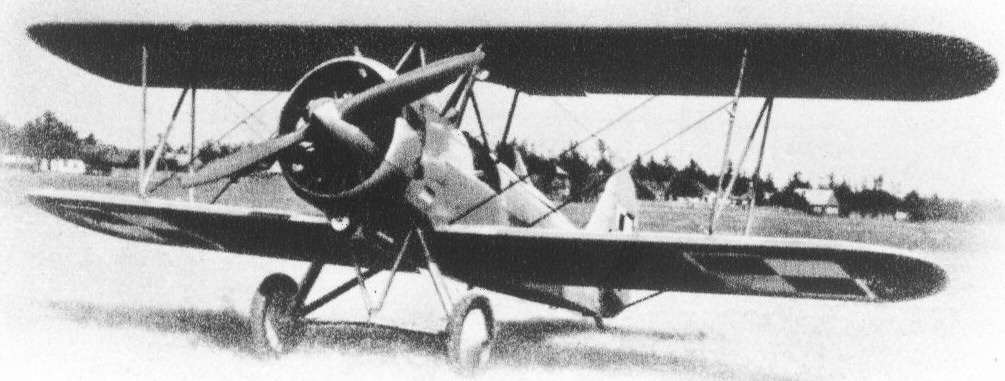PWS-12 on:
[Wikipedia]
[Google]
[Amazon]
The PWS-12 was a biplane trainer designed and developed by Podlaska Wytwórnia Samolotów (PWS). It entered production as the PWS-14.
 The PWS-14s, officially marked as PWS-12s, were used by the Polish Air Force from 1933 in the Officer Training Centre in
The PWS-14s, officially marked as PWS-12s, were used by the Polish Air Force from 1933 in the Officer Training Centre in
Development
The PWS-12 was a single-engined two-seat training biplane, fit also for aerobatics, designed in 1928 by A. Grzędzielewski and August Bobek-Zdaniewski at the PWS factory. The design shared similar parts, includingfuselage
The fuselage (; from the French ''fuselé'' "spindle-shaped") is an aircraft's main body section. It holds crew, passengers, or cargo. In single-engine aircraft, it will usually contain an engine as well, although in some amphibious aircraft ...
and engine, as a high-wing trainer fighter plane PWS-11, developed at the same time.Glass, A. (1977) The main difference was the addition of a lower wing. It was powered by a nose-mounted Skoda-built version of the Wright J-5 Whirlwind
The Wright R-790 Whirlwind was a series of nine-cylinder air-cooled radial aircraft engines built by Wright Aeronautical Corporation, with a total displacement of about and around . These engines were the earliest members of the Wright Whir ...
radial engine. Two prototypes and an airframe for static tests were ordered by the Aviation Department of the War Ministry in February 1928 (along with the PWS-11 prototypes). The first prototype was flown by Franciszek Rutkowski in November 1929. It was later improved - among others, a Townend ring
A Townend ring is a narrow- chord cowling ring fitted around the cylinders of an aircraft radial engine to reduce drag and improve cooling.
Development
The Townend ring was the invention of Dr. Hubert Townend of the British National Physica ...
replaced NACA cowling
The NACA cowling is a type of aerodynamic fairing used to streamline radial engines installed on airplanes. It was developed by Fred Weick of the National Advisory Committee for Aeronautics (NACA) in 1927. It was a major advance in aerodynami ...
, and it was fitted with N-shaped struts between wings instead of perpendicular struts. The second improved prototype was flown on 18 November 1930, and designated PWS-12bis. Testing was successful and a production order for 20 aircraft was placed by the Polish Air Force.
In a meantime, the factory developed improved model PWS-14, featuring a change from wooden to a steel-tube fuselage, strengthened wings and other improvements, like a door in first cockpit's side. The War Ministry ordered a production of one PWS-14 and a similar modification of the series being in production. It caused some financial problems for the factory, since a production of PWS-12s had already started. As a result, the factory delivered in 1932 a series of 20 PWS-14, marked officially as PWS-12 (military numbers 57.1 - 57.20). A further development of PWS-14 was PWS-16, and then PWS-26.
Operational service
 The PWS-14s, officially marked as PWS-12s, were used by the Polish Air Force from 1933 in the Officer Training Centre in
The PWS-14s, officially marked as PWS-12s, were used by the Polish Air Force from 1933 in the Officer Training Centre in Dęblin
Dęblin is a town at the confluence of Vistula and Wieprz rivers, in Lublin Voivodeship, Poland. Dęblin is the part of the agglomeration with adjacent towns of Ryki and Puławy, which altogether has over 100 000 inhabitants. The popula ...
and a Flying School in Grudziądz
Grudziądz ( la, Graudentum, Graudentium, german: Graudenz) is a city in northern Poland, with 92,552 inhabitants (2021). Located on the Vistula River, it lies within the Kuyavian-Pomeranian Voivodeship and is the fourth-largest city in its pro ...
. Most were next replaced by the PWS-16 and PWS-26, some remained in use until World War II in 1939.
The second prototype PWS-12bis (factory no. 358) was modified in 1931 to a role of an aerobatics aircraft. Among others, fuselage sides were made flat and a rudder shape was changed. It received markings SP-AKE and was flown mainly by Lt. J. Orłowski. In March 1931 it was used in a trip to Estonia, and in April 1933 - to Romania, Bulgaria, Yugoslavia, Austria and Czechoslovakia. Then, both prototypes were used for several years as utility aircraft in Aviation Technical Research Institute (ITBL). They were later stored in Dęblin.
Variants
;PWS-12 :Prototype of wooden construction. ;PWS-12bis :Second improved prototype ;PWS-14 :Improved model of mixed construction (aircraft delivered to the Air Force were marked as PWS-12)Specifications (PWS-14)
See also
References
* * * {{PWS aircraft PWS aircraft 1920s Polish military trainer aircraft Single-engined tractor aircraft Biplanes Aircraft first flown in 1929